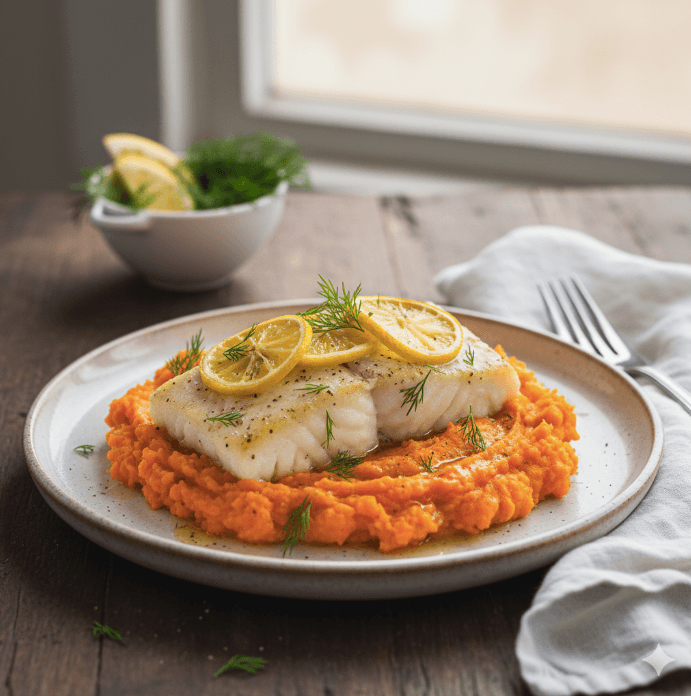The Ultimate Classic or Vegetarian Chili Recipe: A Hearty, Flavor-Packed Comfort Food
Classic or Vegetarian Chili Recipe: A Hearty, Flavorful Comfort Food for All
There’s nothing quite like a warm bowl of chili to bring comfort after a long day. Whether you’re curled up on the couch on a chilly evening or hosting a gathering with friends and family, chili is one of those dishes that always delivers. The best part? It’s a dish that can easily be customized to fit your taste. Whether you prefer the hearty, meaty flavors of a classic chili or the wholesome, plant-based options in a vegetarian version, chili is versatile, delicious, and satisfying.
In this article, you’ll learn how to make the perfect chili—whether you’re a meat-lover or a vegetarian. I’ll walk you through key ingredients, the cooking process, and some tips to elevate your chili game. Ready to get cooking? Let’s dive in!

Why Chili is the Perfect Comfort Food
You’ve probably experienced that comforting feeling when you dig into a bowl of chili. It’s a dish that’s rich in flavor, filling, and guaranteed to make you feel at home. Chili is a go-to comfort food because it’s:
- Hearty and filling: With a combination of beans, meat (or plant-based alternatives), and vegetables, chili provides a satisfying meal that warms you up from the inside out.
- Full of flavor: From the savory spices to the fresh ingredients, chili is a flavor-packed dish that you can customize according to your taste.
- Great for any occasion: Whether you’re serving it at a family dinner, a potluck, or a game day gathering, chili is a crowd-pleaser that everyone will love.
The Essential Ingredients for Classic Chili
To make a truly comforting bowl of chili, you’ll need a few key ingredients. Whether you’re making the classic meat version or a vegetarian alternative, these ingredients will be the foundation of your dish.
Classic Chili Ingredients You Can’t Miss:
- Ground Meat: Traditional chili uses ground beef, but you can substitute ground turkey or chicken for a leaner option.
- Beans: Kidney beans, black beans, and pinto beans are commonly used in classic chili. Beans add texture and make the dish more filling.
- Tomatoes: Crushed tomatoes and tomato paste provide the rich, savory base of your chili.
- Chili Spices: Chili powder, cumin, paprika, and cayenne pepper bring the signature bold and spicy flavor to your dish.
- Onions & Garlic: These aromatics are essential for creating a savory foundation that enhances the overall flavor.
Table: Classic Chili Ingredients
| Ingredient | Quantity | Notes |
|---|---|---|
| Ground Beef | 1 lb | Can be substituted with ground turkey |
| Kidney Beans | 2 cans | Can use other beans of choice |
| Crushed Tomatoes | 2 cans | For a smoother, rich base |
| Chili Powder | 2 tbsp | Adjust to heat preference |
| Onion | 1 | Diced |
| Garlic | 3 cloves | Minced |
A Vegetarian Twist on the Classic Chili
If you’re looking for a plant-based option, don’t worry! You can still enjoy the hearty, savory flavors of chili without the meat. Vegetarian chili is just as flavorful and satisfying, thanks to the inclusion of beans, vegetables, and plant-based protein sources.
How to Make a Flavorful Vegetarian Chili:
- Meat Alternatives: Use lentils, textured vegetable protein (TVP), or tempeh to mimic the texture of meat and provide protein.
- Beans & Veggies: Black beans, kidney beans, bell peppers, zucchini, and corn add both nutrition and texture.
- Spices & Seasonings: The same spices that are used in classic chili—chili powder, cumin, smoked paprika, and oregano—will create the depth of flavor you crave.
Table: Vegetarian Chili Ingredients
| Ingredient | Quantity | Notes |
|---|---|---|
| Lentils or TVP | 1 cup | Great meat alternative |
| Black Beans | 2 cans | Or any preferred bean type |
| Bell Peppers | 2 | Diced |
| Tomatoes | 2 cans | Crushed or diced |
| Corn | 1 cup | Frozen or fresh |
| Chili Powder | 2 tbsp | For the signature chili flavor |

Step-by-Step Guide to Preparing Classic or Vegetarian Chili
Now that you’ve got your ingredients ready, it’s time to get cooking. Here’s a step-by-step guide to making the perfect chili, whether you’re going for the classic meat version or the vegetarian alternative.
How to Make the Perfect Chili:
- Sauté the Aromatics: Start by heating a bit of oil in a large pot and sautéing your onions and garlic until they’re soft and fragrant. This is where your chili’s base flavor begins.
- Brown the Meat (or Substitute): If you’re making classic chili, add the ground beef (or your choice of meat) and cook it until it’s browned. For the vegetarian version, sauté your lentils or TVP to get them heated and slightly crispy.
- Add the Vegetables: Toss in your bell peppers, tomatoes, and beans (and corn, if you’re using it). Stir everything together and let the ingredients combine for a few minutes.
- Simmer to Perfection: Add in your chili powder, cumin, paprika, and any other seasonings. Pour in a bit of water or vegetable broth to help the chili cook. Bring the mixture to a simmer, then lower the heat and let it cook for 30 minutes to an hour. The longer it simmers, the better the flavor.
- Adjust to Taste: After simmering, taste your chili and adjust the seasoning if necessary. You may want to add more chili powder or salt to suit your preferences.
How to Serve Your Chili
Once your chili is ready, it’s time to serve! There are plenty of ways to make your chili experience even better.
Toppings & Pairings:
- Toppings: You can’t go wrong with classic chili toppings like shredded cheese, sour cream, jalapeños, green onions, or cilantro. These toppings bring an additional depth of flavor and texture.
- Side Dishes: Serve your chili with cornbread, tortilla chips, or even a simple side salad for a complete meal.
- Meal Prep: Chili is one of those dishes that actually gets better the next day. It’s a great option for meal prep and can be stored in the fridge for up to 3 days or frozen for future meals.
Tips for the Best Chili Every Time
Making the perfect chili is easier than you think. Here are some tips and tricks that will elevate your chili to the next level:
- Slow Cooking: If you have the time, use a slow cooker or pressure cooker. Slow cooking allows the flavors to meld together beautifully, while a pressure cooker speeds up the process without sacrificing flavor.
- Spice It Up: If you prefer a spicier chili, add more chili powder or toss in fresh peppers like jalapeños, habaneros, or chipotles. You can always adjust the heat level to your liking.
- Let It Rest: After cooking, let your chili rest for a bit before serving. This allows the flavors to deepen and develop, making each bite even more delicious.
- Balance the Flavors: If your chili ends up too spicy, balance the heat with a touch of sweetness. A teaspoon of brown sugar or maple syrup can work wonders.

Nutritional Benefits of Chili
Not only is chili delicious, but it’s also packed with nutritional benefits:
- Rich in Protein: Whether you choose meat or plant-based protein, chili offers a good amount of protein to keep you full and energized.
- Packed with Fiber: Beans and vegetables provide plenty of fiber, which helps with digestion and keeps you feeling satisfied.
- Vitamins and Minerals: Tomatoes, bell peppers, and beans are full of essential nutrients, including vitamins A and C, potassium, and iron.
Conclusion
Chili is the ultimate comfort food—hearty, flavorful, and endlessly customizable. Whether you prefer the classic, meaty version or the wholesome, plant-based alternative, chili is a dish that can satisfy anyone’s taste. Now that you know the essentials for making the perfect chili, why not give it a try? Experiment with your favorite ingredients, add your own twist, and enjoy the comforting flavors of a homemade chili.
So, grab your ingredients, heat up that pot, and get ready for a bowl of chili that’ll warm you from the inside out. Your family and friends will thank you for it!
FAQ Section
Can I make chili ahead of time?
Yes! Chili is even better the next day. Make it ahead and store it in the fridge for up to 3 days, or freeze it for longer storage.
What’s the difference between classic and vegetarian chili?
Classic chili contains meat as the main protein, while vegetarian chili uses plant-based options like beans, lentils, or TVP.
How do I make chili spicier?
To make your chili spicier, add extra chili powder, cayenne pepper, or fresh chili peppers like jalapeños or chipotles.
What should I serve with chili?
Chili pairs perfectly with cornbread, tortilla chips, or a fresh salad. Toppings like sour cream, cheese, and cilantro also complement the dish beautifully.
Toppings & Pairings:
- Toppings: You can’t go wrong with classic chili toppings like shredded cheese, sour cream, jalapeños, green onions, or cilantro. These toppings add an extra layer of flavor and texture.
- Side Dishes: Serve your chili with cornbread, tortilla chips, or even a simple side salad for a complete meal.
- Meal Prep: Chili is one of those dishes that actually gets better the next day. It’s a great option for meal prep and can be stored in the fridge for up to 3 days or frozen for future meals.
Tips for the Best Chili Every Time
Making the perfect chili is easier than you think. Here are some tips and tricks that will elevate your chili to the next level:
- Slow Cooking: If you have the time, use a slow cooker or pressure cooker. Slow cooking allows the flavors to meld together beautifully, while a pressure cooker speeds up the process without sacrificing flavor.
- Spice It Up: If you prefer a spicier chili, add more chili powder or toss in fresh peppers like jalapeños, habaneros, or chipotles. You can always adjust the heat level according to your preference.
- Let It Rest: After cooking, let your chili rest for a bit before serving. This allows the flavors to deepen and develop, making each bite even more delicious.
- Balance the Flavors: If your chili ends up too spicy, balance the heat with a touch of sweetness. A teaspoon of brown sugar or maple syrup can work wonders.
Nutritional Benefits of Chili
Not only is chili delicious, but it’s also packed with nutritional benefits:
- Rich in Protein: Whether you choose meat or plant-based protein, chili offers a good amount of protein to keep you full and energized.
- Packed with Fiber: Beans and vegetables provide plenty of fiber, which helps with digestion and keeps you feeling satisfied.
- Vitamins and Minerals: Tomatoes, bell peppers, and beans are full of essential nutrients, including vitamins A and C, potassium, and iron.
Conclusion
Chili is the ultimate comfort food—hearty, flavorful, and endlessly customizable. Whether you prefer the classic, meaty version or the wholesome, plant-based alternative, chili is a dish that can satisfy anyone’s taste. Now that you know the essentials for making the perfect chili, why not give it a try? Experiment with your favorite ingredients, add your own twist, and enjoy the comforting flavors of a homemade chili.
So, grab your ingredients, heat up that pot, and get ready for a bowl of chili that’ll warm you from the inside out. Your family and friends will appreciate it!
FAQ Section
Can I make chili ahead of time? Yes! Chili is even better the next day. Make it ahead and store it in the fridge for up to 3 days, or freeze it for longer storage.
What’s the difference between classic and vegetarian chili? Classic chili contains meat as the main protein, while vegetarian chili uses plant-based options like beans, lentils, or TVP.
How do I make chili spicier? To make your chili spicier, add extra chili powder, cayenne pepper, or fresh chili peppers like jalapeños or chipotles.
What should I serve with chili? Chili pairs perfectly with cornbread, tortilla chips, or a fresh salad. Toppings like sour cream, cheese, and cilantro also complement the dish beautifully.







